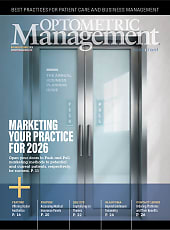
A growing number of families are getting an early start on back-to-school shopping, with 67% having begun their purchases by early July, according to the annual survey from the National Retail Federation (NRF) and Prosper Insights & Analytics. This marks the highest early shopping rate since NRF began tracking the trend in 2018 and reflects a continued rise from 55% last year.
“Consumers are being mindful of the potential impacts of tariffs and inflation on back-to-school items, and have turned to early shopping, discount stores, and summer sales for savings on school essentials,” says NRF vice president of industry and consumer insights Katherine Cullen.
According to the survey, 51% of back-to-school shoppers reported starting earlier than last year due to fears of rising prices linked to tariffs. While many consumers are shopping sooner, 84% still have at least half of their purchases left to complete, citing reasons such as waiting for better deals (47%), uncertainty over needed items (39%), or the desire to spread out their budgets (24%).
Retail events like Prime Day, Walmart Deals, and Target Circle Week are influencing shopping habits, with 82% of respondents using July sales to buy school-related items.
On average, families with K-12 students expect to spend $858.07 this year—slightly less than the $874.68 reported in 2024—yet total projected spending is up slightly to $39.4 billion. Top spending categories include electronics ($295.81 per household), clothing and accessories ($249.36), shoes ($169.13), and school supplies ($143.77). Online remains the most popular shopping destination (55%), followed by department stores (48%), discount stores (47%), and clothing retailers (41%).
College students and their families plan to spend an average of $1,325.85, down from $1,364.75 in 2024. However, broader participation in shopping across categories has pushed expected total back-to-college spending to $88.8 billion, up from $86.6 billion. The largest spending categories include electronics ($309.50), dorm furnishings ($191.39), clothing ($166.07), food ($140.24), and personal care items ($117.95).
“This increase can largely be attributed to higher income households, while lower income households are pulling back across categories because of economic uncertainty,” says Prosper Executive vice president of strategy Phil Rist.
Online shopping continues to lead among college shoppers (48%), with discount (36%) and department stores (35%) also seeing significant traffic. Discount stores in particular have grown in popularity by five percentage points since last year.



